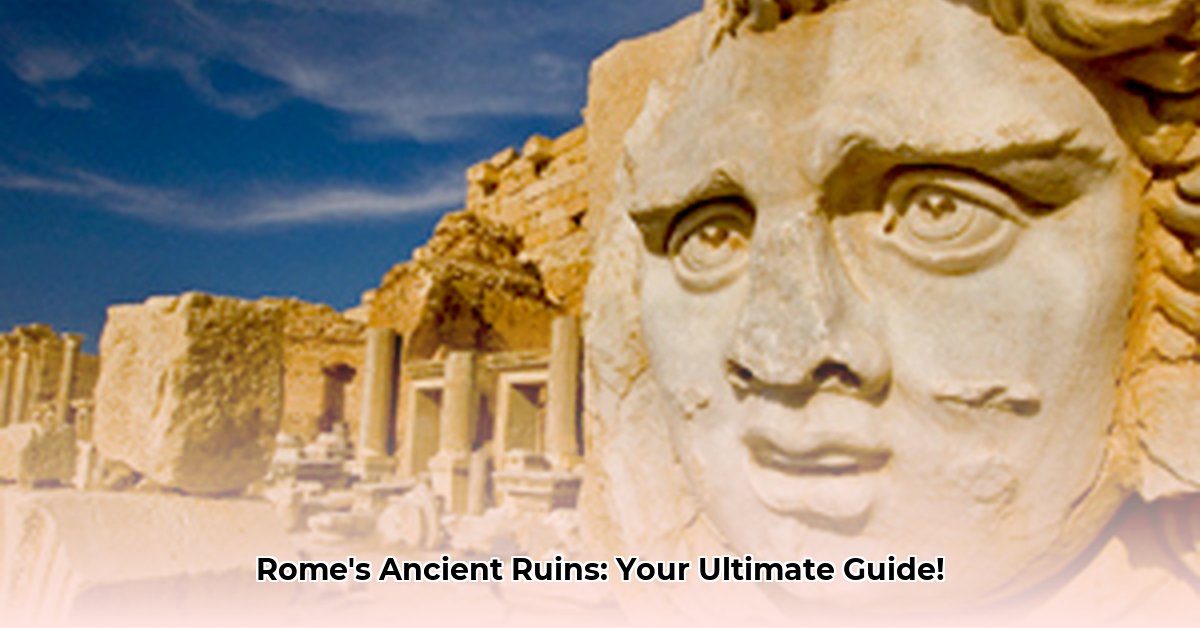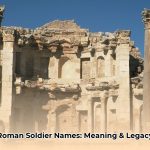Imagine stepping back in time, not just to observe, but to truly feel the pulse of a civilization that shaped the world. Rome, the Eternal City, is more than just a collection of ancient stones; it’s a living testament to human ambition, engineering brilliance, and enduring legacy. From the thunderous roar of the Colosseum to the hushed sanctity of hidden temples, every corner whispers stories of emperors, gladiators, and daily life from millennia past. This guide is your essential companion to navigating Rome’s unparalleled ancient Roman sites, ensuring an unforgettable journey that combines awe-inspiring discovery with responsible, respectful exploration. We’ll delve into the most iconic Roman ruins, uncover surprising archaeological gems, celebrate the ingenuity of Roman engineering, and equip you with the insights needed for a truly enriching and sustainable adventure through history. You can explore more about life in Rome for a deeper understanding.
Experiencing the Grandeur: Rome’s Premier Ancient Sites
Rome’s archaeological sites offer an immersive portal to antiquity. To truly appreciate their profound significance and avoid merely gazing at ancient rubble, understanding their context is key. Every column, every preserved fresco, every worn stone tells a part of Rome’s epic saga.
The Immutable Icons: Colosseum, Roman Forum, and Palatine Hill
No visit to Rome is complete without encountering its triumvirate of ancient power: the Colosseum, the Roman Forum, and Palatine Hill. These sites are not just popular; they are fundamental to comprehending the heart of the Roman Empire.
- The Colosseum: Formally known as the Flavian Amphitheater, this monumental structure, completed in 80 AD, once hosted gladiatorial contests, public spectacles, and dramatic re-enactments. Its sheer scale and advanced design, including a complex underground hypogeum for animals and performers, speak volumes about Roman ingenuity and dedication to entertainment. To truly grasp its grandeur, consider a guided tour that explores the arena floor and subterranean passages, offering a perspective on ancient Roman engineering previously unseen by the general public.
- The Roman Forum: Once the bustling epicenter of ancient Rome, the Forum was a sprawling valley of temples, basilicas, and public spaces where political debates raged, laws were established, and triumphant parades were celebrated. Wander amidst the remnants of the Temple of Saturn, the House of the Vestal Virgins, and the Arch of Septimius Severus to visualize the vibrant daily life and political machinations of this vital hub. It remains a powerful symbol of Roman civic life.
- Palatine Hill: Legend has it this is where Romulus founded Rome, making it the city’s mythological birthplace. High above the Forum and Circus Maximus, the Palatine later became the exclusive residential district for emperors and the elite. Explore the sprawling ruins of imperial palaces, such as the Domus Augustana, and imagine the luxurious lives of those who ruled the Roman world. The panoramic views from this vantage point provide a breathtaking perspective on the interconnectedness of Rome’s ancient core.
Practical Tip: For these highly popular sites, booking tickets in advance online is not merely recommended; it’s essential. This can drastically reduce your wait time, often by over 90%, allowing you to maximize your exploration time. Wear sturdy, comfortable footwear, as the terrain can be uneven, and prepare for extensive walking.
Beyond the Crowds: Preserved Gems and Hidden Histories
While the major sites draw significant attention, Rome holds countless lesser-known yet remarkably preserved archaeological sites that offer deeper, more intimate glimpses into Roman life.
- Ostia Antica: A short journey from Rome centers, Ostia Antica was the ancient port city, a thriving commercial hub vital for supplying Rome. Unlike Pompeii, Ostia was preserved not by volcanic ash but by river silting, offering an incredibly intact example of a Roman working city. Stroll along its main street, Decumanus Maximus, explore multi-story apartment buildings (insulae), visit the theater, and marvel at the intricate mosaics in the Baths of Neptune. This sprawling site provides a comprehensive snapshot of ordinary Roman life.
- Baths of Caracalla: These monumental imperial baths, consecrated in 216 AD, were not merely places for bathing but vast recreational complexes. Featuring immense caldaria, tepidaria, and frigidaria, along with libraries, gardens, and gymnasiums, they showcased exceptional Roman engineering in water management and heating systems. Though largely in ruins, the sheer scale and surviving mosaics convey the opulence and social importance of public bathing in ancient Rome. During summer, the ruins often host opera performances, offering a unique blend of ancient and contemporary culture.
- Ara Coeli Insula: Tucked away near the Capitoline Hill, the Ara Coeli Insula provides a rare and valuable insight into the daily lives of Rome’s working class. This surviving four-story apartment block stands in stark contrast to the grand imperial residences, illustrating the urban planning solutions for an overcrowded ancient city. Observing its simple design and ground-floor tabernae (shops) offers a tangible connection to the ordinary Romans who lived and worked within its walls.
- Largo di Torre Argentina: This central archaeological site, recently opened to public access, is renowned for two distinct features: the remains of four Republican-era temples and its status as a sanctuary for Rome’s stray cats. More significantly for history buffs, it is widely believed to be the site of Julius Caesar’s assassination in 44 BC. New walkways allow visitors to explore the ruins up-close, offering a unique blend of historical drama and charming contemporary life.
Engineering Masterpieces: Aqueducts and Underground Worlds
The Romans were unparalleled engineers, and their legacy is perhaps most evident in their sophisticated water systems and subterranean structures.
- The Roman Aqueducts: These incredible networks of channels, tunnels, and lofty arches were crucial for supplying Rome with fresh water from distant mountain springs. Structures like the Aqua Claudia and Aqua Marcia, visible in the Parco degli Acquedotti, stand as testament to Roman ingenuity in maintaining precise gradients over vast distances, ensuring a constant and reliable water flow into the city. Exploring these magnificent ruins offers a profound appreciation for the infrastructure that sustained a bustling metropolis of over a million people.
- Vicus Caprarius (City of Water): Near the Trevi Fountain, this lesser-known site reveals a fascinating underground complex, ingeniously built upon the Aqua Virgo aqueduct’s cistern. Visitors can explore ancient apartment blocks and see the continuous flow of water that still feeds Rome’s iconic fountains today. It’s a vivid demonstration of how ancient and modern Rome are inextricably intertwined, often directly stacked upon each other.
- San Clemente Basilica Undergrounds: This multi-layered site offers a unique vertical journey through Rome’s history. Below the 12th-century medieval basilica lies a 4th-century early Christian basilica, and even deeper, remnants of ancient Roman buildings including an authentic Mithraic temple and a Roman mint. It provides an extraordinary archaeological cross-section of urban development over centuries.
Mindful Exploration: Being a Respectful Traveler
Visiting Rome’s ancient Roman sites carries a profound responsibility. As temporary custodians of these irreplaceable treasures, mindful conduct ensures their preservation for future generations and enhances your own experience.
- Plan Ahead: Always book popular sites in advance. Research opening hours, specific entry requirements (like the SUPER ticket for certain Forum/Palatine sites), and recommended visiting times to avoid peak crowds.
- Dress with Respect: Many sites, particularly those with religious connections or in close proximity to churches, appreciate modest attire. Covering shoulders and knees is a general sign of respect in culturally significant areas.
- Listen to Guides and Signs: Adhere strictly to all rules, barriers, and instructions from site staff. They are in place to protect fragile structures and ensure safety. Do not touch or lean on ancient walls, frescoes, or artifacts.
- Sustainable Practices: Opt for public transport or walking where possible. Dispose of waste properly. Support local businesses and artisans who ethically operate around these historical areas.
Preserving the Eternal City: A Deeper Dive into Roman Heritage Protection
Rome’s unwavering commitment to safeguarding its cultural heritage is a continuous, complex endeavor involving cutting-edge science, robust governance, and global collaboration. The goal is clear: to ensure the profound legacy of Rome endures for millennia to come.
Conservators employ a meticulous blend of traditional craftsmanship and advanced scientific methodologies. Techniques such as Gas Chromatography-Mass Spectrometry (GC-MS) and Energy Dispersive X-ray Fluorescence (EDXRF) are routinely used for precise material analysis, enabling minimal intervention during restoration. This scientific rigor ensures that repairs are compatible with original materials, preventing further degradation of delicate ancient structures.
The Digital Frontier in Conservation
Digital technologies are revolutionizing heritage preservation. 3D scanning (using LiDAR for detailed mapping), Augmented Reality (AR), and drones provide invaluable tools for comprehensive documentation, continuous structural monitoring, and innovative visitor management. Imagine experiencing a ruin through a meticulously recreated virtual reality tour, allowing you to visualize its original splendor without imposing any physical wear and tear on the actual site. This technological integration allows for widespread access while minimizing environmental impact.
Balancing Act: Public Access vs. Site Integrity
One of the most persistent challenges in cultural heritage preservation is striking the delicate balance between allowing public access and safeguarding the physical integrity of a site. Mass tourism, while economically beneficial, can unfortunately exert significant pressure on fragile Roman ruins. Strategies to mitigate this impact include:
- Digital Ticketing Systems: Optimizing visitor flow through timed entry and digital reservations reduces congestion and physical strain on entrances and pathways.
- Virtual and Augmented Reality Tours: Offering immersive digital experiences alongside limited physical visits can alleviate overcrowding at peak times, providing an educational alternative that is accessible globally.
- Responsible Tourism Campaigns: Collaborating with tour operators and travel agencies to actively promote a shared sense of stewardship among visitors, encouraging respectful behavior and adherence to guidelines.
Actionable Steps for the Engaged Traveler
As a curious visitor or passionate enthusiast, you can play a direct role in supporting these vital preservation efforts for Rome’s remarkable historic landmarks:
- Support Responsible Tourism: Prioritize tour operators and businesses that demonstrate a clear commitment to sustainable practices and heritage protection.
- Donate to Restoration Funds: Contribute directly to recognized organizations or governmental programs dedicated to the conservation and restoration of Roman sites. Even modest contributions collectively make a significant difference.
- Engage and Educate: Participate in cultural events, workshops, or educational tours that deepen your understanding of the sites. Share what you learn to foster appreciation and advocate for preservation among others.
- Utilize Digital Resources: Explore the vast digital archives and virtual tours available. Not only do these enhance your understanding, but they also contribute to the long-term preservation strategy by reducing direct physical impact.
By actively supporting these multifaceted initiatives, you become an integral part of ensuring that Rome’s ancient wonders continue to inspire and educate for centuries to come.
Funding the Future: Strategies for Roman Heritage
The consistent preservation of Rome’s unique cultural heritage necessitates diverse and robust funding models. Here’s a succinct overview of common strategies employed:
| Funding Model | Pros | Cons |
|---|---|---|
| Art Bonus Program | Actively incentivizes significant private donations through tax credits, effectively fostering public-private partnerships. | Long-term sustainability can be somewhat reliant on economic conditions and philanthropic trends; equitable distribution across all sites might be challenging, favoring more prominent projects. |
| Public Funding | Provides a more stable and predictable financial bedrock for essential, ongoing conservation work, ensuring project continuity. | Can unfortunately be highly susceptible to shifting political priorities, unexpected governmental budget cuts, or reallococation of resources, leading to potential project delays or cessation. |
| International Grants | Accesses a broader pool of resources and specialized expertise for complex, large-scale projects, fostering global collaboration and knowledge exchange. | Application processes are often highly competitive and complex, requiring specific project alignment with granting body objectives and comprehensive reporting. |
| Ticketing Revenue | Generates direct funds from visitors, linking public enjoyment to direct preservation efforts. | Risks over-tourism if not meticulously managed, potentially leading to physical degradation of sites; can also make sites less accessible to certain demographics due to cost barriers. |
| Corporate Sponsorships | Offers significant, often targeted, financial injections and valuable marketing support for specific conservation initiatives or educational programs, improving public awareness. | May introduce commercial influences or require brand visibility that could conflict with the historical integrity or solemnity of certain sites, requiring careful negotiation and ethical oversight. |
(Source: Cultural & Heritage Venue Protection in Rome: Preserving the Eternal City. wantedinrome.com. Accessed 2024-08-16)
Unlocking Accessibility: Navigating Tickets for Ancient Archaeological Sites
For many visitors, the thought of long queues at Rome’s popular attractions can be daunting. Thankfully, strategic ticketing options, like the SUPER ticket, have been designed to enhance access and improve the visitor experience at key archaeological sites within the Roman Forum and Palatine Hill. This integrated ticket provides access to eight unique, often less-crowded sites, offering an intimate glimpse into the daily lives and artistic achievements of ancient Romans that goes far beyond the typical tourist path.
Sites included in the SUPER ticket, such as the House of Augustus, Santa Maria Antiqua, and the Domus Tiberiana, offer unparalleled insights into Roman imperial life and early Christian art. Exploring these less-trafficked locales provides a deeper appreciation for ancient Roman culture and the layers of history beneath the modern city, allowing for reflection away from the main throngs.
The SUPER Ticket: A Value Proposition?
The SUPER ticket indeed offers superb value for those committed to exploring beyond the Colosseum’s immediate vicinity, but it requires careful planning. While it grants exclusive access to numerous fascinating sites, it is crucial to understand that Colosseum entry must be reserved separately. Furthermore, specific sites within the SUPER itinerary, such as the Domus Transitoria and the House of Livia, are sometimes temporarily closed for vital restoration work. The official Coop Culture website (archeoroma.org/tickets/) is the primary source, but tickets can sell out remarkably quickly due to high demand.
Mastering the SUPER Ticket Booking Process:
- Check Availability Meticulously: Begin by consulting the official Coop Culture website for SUPER ticket availability. Simultaneously, check reputable third-party vendors for alternative booking options and immediate digital vouchers, which can streamline your entry.
- Secure Colosseum Entry Separately: This is a non-negotiable step. Your SUPER ticket does not include Colosseum access. Reserve your Colosseum entry well in advance, ideally weeks or even months prior to your visit, as daily visitor numbers are strictly managed.
- Confirm Site Status Prior to Arrival: Before your chosen visit date, diligently reconfirm the opening status of individual SUPER sites. Conservation efforts are ongoing, and temporary closures for preservation or archaeological work are common, particularly for delicate structures like the Domus Transitoria or the House of Livia.
SUPER Ticket Features: A Detailed Analysis
| Feature | Pro | Con |
|---|---|---|
| Exclusive Site Access | Provides unparalleled entry to eight unique, often less-visited archaeological sites, including hidden gems and historically significant Roman ruins, offering a richer, more nuanced exploration away from the main tourist flows. | Certain specific sites within the SUPER ticket itinerary may be temporarily closed without extensive prior notice due to ongoing preservation efforts or new archaeological discoveries, potentially impacting your planned visit. |
| Reduced Crowds | Significantly less crowded than the main Colosseum and Roman Forum areas, fostering a more peaceful, intimate exploration experience with enhanced opportunities for photography and reflection. | While individual sites may be less crowded, the overall Roman Forum and Palatine Hill complex, through which you access these sites, remains a major tourist area requiring some navigation through general visitor throngs. |
| Value for Money | Offers excellent value, bundling access to multiple unique locations, particularly if you intend to visit a majority of the included sites, providing a comprehensive historical journey at a reduced combined cost. | Colosseum entry is always separate, adding an additional booking step and cost. Official website tickets sell out extremely quickly, making third-party options a necessity but potentially introducing concerns about voucher reliability or higher fees. |
| Historical Depth | Provides an amazing, in-depth glimpse into the daily lives, architectural achievements, and nuanced artistry of ancient Roman leaders and citizens across various social strata. | May require additional personal research or an audio guide to fully appreciate the complex historical context and intricate details of each specific site, as on-site signage can be limited. |
Beyond the SUPER Ticket: Alternative Access and Free Bonuses
If direct Coop Culture tickets are elusive, many reputable third-party vendors offer packages that include some SUPER sites or provide alternatives. Always ensure you download PDF vouchers to your device, as cell service can be unreliable around some ancient Roman ruins.
While exploring Palatine Hill, make sure to visit the Palatine Museum. It houses a fascinating collection of artifacts, sculptures, and Roman objects uncovered during excavations on the hill, providing invaluable context to the grand structures outside. Additionally, the Temple of Romulus, located within the Roman Forum complex, has occasionally offered free access, providing another unexpected glimpse into Roman devotion and architecture.
The Domus Aurea: A Case Study in Innovation and Preservation
The Domus Aurea, or “Golden House,” stands as a monumental testament to both Emperor Nero’s boundless ambition and the unparalleled prowess of Roman architectural innovation. Its rediscovery during the Renaissance profoundly influenced European art and design for centuries, shaping the very aesthetic of the era. Today, ongoing conservation efforts tirelessly strive to protect this precious historical treasure for future generations, simultaneously implementing cutting-edge sustainable tourism strategies to strike the necessary balance between public access and meticulous preservation. Advanced technologies, particularly augmented reality, are increasingly enhancing visitor experiences without causing physical impact to the fragile remnants.
Nero’s Dazzling Vision: Opulence Reimagined
After the devastating Great Fire of 64 AD, Emperor Nero seized a vast swathe of central Rome to construct a personal palace like no other. The Domus Aurea was not merely a residence; it was a sprawling entertainment complex covering over 100 acres across the Palatine, Esquiline, and Oppian Hills. His visionary architects, Severus and Celer, pushed the boundaries of Roman engineering, creating vaulted ceilings, intricate frescos, and the famous octagonal hall featuring an ingenious oculus that illuminated a rotating dining room—a marvel of ancient mechanics. The palace boasted shimmering gold leaf, vibrant frescoes by the renowned artist Fabullus, and precious marbles, truly a sensory spectacle reflecting immense imperial power and refined artistic taste.
Architectural Genius: Beyond Mere Extravagance
What truly set the Domus Aurea apart was its revolutionary use of concrete and spatial design. The Romans were undisputed masters of concrete, and this palace served as their ultimate testing ground. Its innovative vaulted ceilings and daring spatial configurations unequivocally demonstrated a profound mastery of material science and structural engineering previously unseen. This extraordinary place significantly influenced Roman architecture for centuries, setting new, ambitious standards for imperial residences and public buildings.
Damnatio Memoriae: Erasing a Controversial Legacy
Nero’s controversial reign culminated in his downfall, and with it, the golden dream of his palace. His successors, eager to distance themselves from his unpopular legacy, initiated a systematic process known as “damnatio memoriae” (condemnation of memory), aimed at erasing his public image and achievements. Much of the Domus Aurea was methodically dismantled, filled with earth, and its vast tracts of land returned to the public or repurposed. Famously, Emperor Vespasian built the Colosseum directly over part of Nero’s artificial lake, and Trajan later erected his expansive baths and markets nearby, effectively burying and obliterating Nero’s luxurious statement as if it had never existed.
Renaissance Revival: Artistic Inspiration from the Depths
Centuries passed, and the Domus Aurea lay forgotten, buried deep beneath the expanding city of Rome. It was only during the Renaissance that artists like Raphael and Pinturicchio quite literally stumbled upon its buried ruins while exploring underground chambers. They were awe-struck by the remarkably preserved frescos and intricate “grotesque” decorations—a unique style teeming with fantastical creatures and whimsical designs. This stylistic discovery sparked an entirely new wave of creative inspiration in art and architecture across Europe, directly influencing Renaissance decorative arts and becoming a seminal influence on generations of artists.
Enduring Challenges in Preservation
Despite its buried preservation, the Domus Aurea faces persistent ongoing threats. Water infiltration and structural instability are significant concerns requiring constant vigilance. Archaeologists and conservationists employ advanced techniques such as LiDAR (Light Detection and Ranging) for 3D mapping and GPR (Ground Penetrating Radar) for subsurface analysis. They also meticulously monitor environmental conditions—like humidity and temperature—and implement sophisticated mitigation strategies to prevent further deterioration of its delicate frescoes and structures. Securing consistent funding remains crucial for sustaining these long-term efforts and ensuring the site’s delicate preservation.
Sustainable Tourism at the Domus Aurea: A Model for the Future
The challenge at the Domus Aurea is a paradigm for sustainable tourism: how to meticulously preserve a fragile historical site while simultaneously allowing people to experience its profound historical significance. The aim is for future generations across the globe










